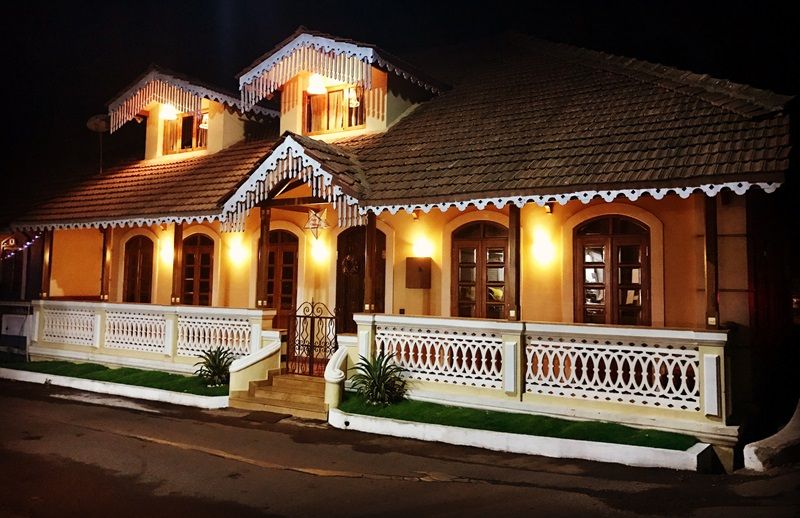
November 07, 2023
Designing your dream home is an exciting journey, and today's technology can enhance it. Contemporary house design is a dynamic interplay of form, function, and aesthetics, with the front elevation serving as the face of a structure. In today's digital age, the integration of 3D technology has revolutionised home construction and front elevations. This article discusses the design principles that a homeowner should know when presented with 3D front elevations by architects and designers during home construction.
Definition of front elevations in architectural design
A front elevation is like a picture of the front of a home. This drawing or image includes details like doors, windows, and other design features. Architects and designers use front elevations to help individual home builders, like you, to understand how a home will look before it's built. It is a crucial aspect offering the first visual impression and setting the tone for the entire structure.

Significance of 3D visualisation
The advent of 3D technology has elevated front elevations from static drawings to dynamic, immersive experiences. 3D home design allows architects to convey the depth, scale, and spatial relationships of a design in ways that traditional drawings cannot. The spatial relationships show the way different elements within a space relate to and interact with each other. For example, the arrangement of rooms, corridors, and outdoor spaces in a home.
3D technology facilitates more lifelike renderings that showcase the interplay of light and shadow, the texture of materials, and the overall ambience of the design.
What you must look for in good front elevations?
Balance and symmetry
Achieving visual equilibrium is fundamental to captivating front elevations in contemporary house design. A balanced design instils a sense of stability and order, drawing the individual home builder’s eye to key focal points.

Example: Imagine a front elevation where a central, symmetrical arrangement of windows and doors creates a sense of equilibrium. The symmetry brings a feeling of order and stability, making the home's facade visually appealing.
Proportion and scale
Ensuring proper proportions and scale is critical for a front elevation that resonates with viewers. Oversized or undersized elements can disrupt the visual harmony, while a well-balanced proportion enhances the overall aesthetic appeal.
Example: Picture a house with well-proportioned elements – windows that aren't too small for the walls or a door that fits seamlessly into the design.
Unity and harmony
Creating a unified design concept ensures that all elements work cohesively to convey a singular message. Harmony in material and colour selection establishes a cohesive narrative, contributing to the visual impact of the front elevation.
Example: Consider a front elevation in 3D home design where the materials and colours used throughout are carefully chosen to work together.

Contrast and variety
Strategic use of contrast adds visual interest to a front elevation. It can be achieved through variations in colour, texture, or form. However, balance is key to prevent overwhelming the viewer with excessive contrast.
Example: A home with a predominantly neutral colour scheme, where the front elevation incorporates a bold, contrasting element such as a brightly coloured front door or a textured accent wall.
Rhythm and repetition
Establishing a visual rhythm guides the viewer's gaze through the front elevation. Repetitive design elements contribute to a sense of continuity and flow, enhancing the overall visual experience.
Example: Envision a front elevation where a rhythmic pattern of evenly spaced windows or architectural features guides the eye along the facade.
Incorporating textures for visual interest
Textures add depth and tactile quality to a design. In 3D renderings, the portrayal of textures is crucial for conveying the feel of materials, be it the warmth of wood, the coolness of stone, or the sleekness of metal.
Lighting in 3D front elevations
Lighting can accentuate key features, create shadows that enhance depth, and evoke a specific mood. In 3D front elevations, lighting plays a pivotal role in shaping the visual narrative.

Use of both natural and artificial light sources adds dynamism to a 3D front elevation. Highlighting certain elements with light creates focal points, guiding the homeowner's attention and emphasising the design's unique features.
Technological advancements in 3D front elevation design
Overview of software and tools for 3D rendering
When it comes to crafting your dream home, there's a world of software and tools at your fingertips. From trusted industry favourite like AutoCAD to specialised rendering tools, the choices are abundant.
Benefits of Virtual Reality (VR) and Augmented Reality (AR) in front elevation design
In the modern world of home design, Virtual Reality (VR) and Augmented Reality (AR) are your key to an extraordinary experience. These cutting-edge technologies bring your 3D home vision to life in ways you've never imagined. Picture yourself walking through your future home, making decisions in an immersive, interactive space.
Staying updated with evolving design trends
The field of architectural design is dynamic, with trends constantly evolving. Staying abreast of emerging design trends ensures you can see fresh ideas and innovative approaches into your 3D front elevation of contemporary house design.
In conclusion, if you're an individual looking to build a home, understand the core principles, embracing the beauty of materials and textures, harnessing the power of lighting, and keeping up with the latest in technology.
Ready to build your dream home? Schedule a free consultation to start your journey today!